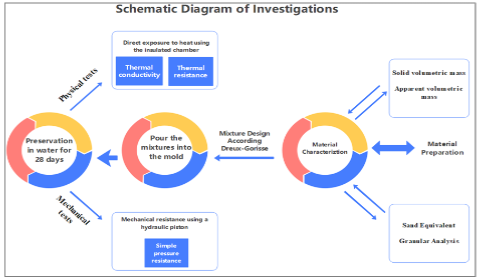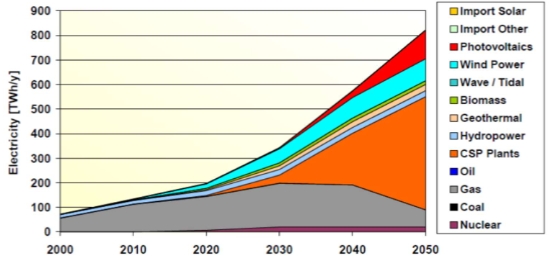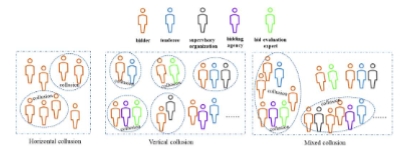Roles of stakeholders for adopting sustainable design in buildings
Abstract
Buildings account for the highest carbon dioxide emissions during their operation stage, primarily due to high energy use for heating, cooling, and lighting, which in turn contribute to global warming and climate change. Such impact can be considerably reduced through crafting sustainable design (SusD) in buildings. So, availability of relevant information, professional guidance to clients, and appropriate decision-making are crucial. A study summarized the findings from a questionnaire survey conducted in Brunei with 122 responses. The results revealed that architects, consultants, and government are more important stakeholders to assist with SusD adoption, while clients and developers are important stakeholders in decision-making. The results appreciate the roles of clients and architects to a higher degree, despite a comparatively higher number of private projects in Brunei with relatively more influence of contractors. This was interpreted as having a good degree of awareness of the survey participants towards the role of SusD and who actually can better contribute to SusD adoption. However, the outcome also revealed inconsistent perception among the respondents, both within and between different groups based on their affiliations and nature of job. This inconsistency implies the need for appropriate training or education to enhance awareness of SusD, make pertinent information available, and develop appropriate skills.
References
[1]Susorova I. Green facades and living walls: Vertical vegetation as a construction material to reduce building cooling loads. In: Pacheco-Torgal F, Labrincha JA, Cabeza LF, Granqvist CG (editors). Eco-Efficient Materials for Mitigating Building Cooling Needs: Design, Properties and Applications. Woodhead Publishing; 2015. pp. 127-153. doi: 10.1016/b978-1-78242-380-5.00005-4
[2]Zhou C, Wang Z, Chen Q, et al. Design optimization and field demonstration of natural ventilation for high-rise residential buildings. Energy and Buildings. 2014; 82: 457-465. doi: 10.1016/j.enbuild.2014.06.036
[3]Zuo J, Read B, Pullen S, et al. Achieving carbon neutrality in commercial building developments – Perceptions of the construction industry. Habitat International. 2012; 36(2): 278-286. doi: 10.1016/j.habitatint.2011.10.010
[4]Zainul Abidin N, Yusof N, Othman AAE. Enablers and challenges of a sustainable housing industry in Malaysia. Construction Innovation. 2013; 13(1): 10-25. doi: 10.1108/14714171311296039
[5]Saridaki M, Haugbølle K. Towards sustainable design: Integrating data from operation of buildings in design practices. IOP Conference Series: Earth and Environmental Science. 2020; 588(5): 052051. doi: 10.1088/1755-1315/588/5/052051
[6]Elbeltagi E, Wefki H, Khallaf R. Sustainable Building Optimization Model for Early-Stage Design. Buildings. 2022; 13(1): 74. doi: 10.3390/buildings13010074
[7]Ma C, Liu Y, Wang D. Analysis of thermal performance and energy saving strategy of rural residential buildings in Northwest China.Architecture and Technology. 2015; 47: 427-432.
[8]Shi F, Wang S, Huang J, et al. Design strategies and energy performance of a net-zero energy house based on natural philosophy. Journal of Asian Architecture and Building Engineering. 2019; 19(1): 1-15. doi: 10.1080/13467581.2019.1696206
[9]Dahlstrøm O, Sørnes K, Eriksen ST, et al. Life cycle assessment of a single-family residence built to either conventional- or passive house standard. Energy and Buildings. 2012; 54: 470-479. doi: 10.1016/j.enbuild.2012.07.029
[10]Zhang N, Bi Y. The development and application of passive architecture in China. E3S Web of Conferences. 2020; 165: 04019. doi: 10.1051/e3sconf/202016504019
[11]Rana K. Towards Passive Design Strategies for Improving Thermal Comfort Performance in a Naturally Ventilated Residence. Journal of Sustainable Architecture and Civil Engineering. 2021; 29(2): 150-174. doi: 10.5755/j01.sace.29.2.29256
[12]Moret Rodrigues A, Santos M, Gomes MG, et al. Impact of Natural Ventilation on the Thermal and Energy Performance of Buildings in a Mediterranean Climate. Buildings. 2019; 9(5): 123. doi: 10.3390/buildings9050123
[13]Sharma L, Kishan Lal K, Rakshit D. Evaluation of impact of passive design measures with energy saving potential through estimation of shading control for visual comfort. Journal of Building Physics. 2017; 42(3): 220-238. doi: 10.1177/1744259117742989
[14]Amos-Abanyie S, Akuffo FO, Kutin-Sanwu V. Effects of Thermal Mass, Window Size, and Night-Time Ventilation on Peak Indoor Air Temperature in the Warm-Humid Climate of Ghana. The Scientific World Journal. 2013; 2013: 1-9. doi: 10.1155/2013/621095
[15]Berardi U. Stakeholders’ influence on the adoption of energy-saving technologies in Italian homes. Energy Policy. 2013; 60: 520-530. doi: 10.1016/j.enpol.2013.04.074
[16]Shen W, Tang W, Siripanan A, et al. Critical Success Factors in Thailand′s Green Building Industry. Journal of Asian Architecture and Building Engineering. 2017; 16(2): 317-324. doi: 10.3130/jaabe.16.317
[17]Mohamad Bohari AA, Skitmore M, Xia B, et al. Insights into the adoption of green construction in Malaysia: The drivers and challenges. Environment-Behaviour Proceedings Journal. 2016; 1(4): 37. doi: 10.21834/e-bpj.v1i4.165
[18]Loosemore M, Lim BTH. Linking corporate social responsibility and organizational performance in the construction industry. Construction Management and Economics. 2016; 35(3): 90-105. doi: 10.1080/01446193.2016.1242762
[19]Rais SLA, Bidin ZA, Bohari AAM, et al. The Possible Challenges of Green Procurement Implementation. IOP Conference Series: Materials Science and Engineering. 2018; 429: 012023. doi: 10.1088/1757-899x/429/1/012023
[20]Juffle NAH, Rahman MM. An overview of motivators and challenges of passive design strategies. IOP Conference Series: Earth and Environmental Science. 2023; 1195(1): 012039. doi: 10.1088/1755-1315/1195/1/012039
[21]Juffle NAH, Rahman MM, Asli RA. Adopting Passive Design Strategies: A Brief Review. In: Proceedings of the 8th Brunei International Conference on Engineering and Technology 2021; 8–10 November 2021; Bandar Seri Begawan, Brunei Darussalam.
[22]Juffle NA, Rahman MM. Sustainable Building Design Strategies: A Review Summary. UniMAP; 2022.
[23]Ayarkwa J, Joe Opoku DG, Antwi-Afari P, et al. Sustainable building processes’ challenges and strategies: The relative important index approach. Cleaner Engineering and Technology. 2022; 7: 100455. doi: 10.1016/j.clet.2022.100455
[24]Häkkinen T, Belloni K. Barriers and drivers for sustainable building. Building Research & Information. 2011; 39(3): 239-255. doi: 10.1080/09613218.2011.561948
[25]Toriola-Coker LO, Alaka H, Bello WA, et al. Sustainability Barriers in Nigeria Construction Practice. IOP Conference Series: Materials Science and Engineering. 2021; 1036(1): 012023. doi: 10.1088/1757-899x/1036/1/012023
[26]Jin X, Zhang G, Liu J, et al. Major Participants in the Construction Industry and Their Approaches to Risks: A Theoretical Framework. Procedia Engineering. 2017; 182: 314-320. doi: 10.1016/j.proeng.2017.03.100
[27]Saleh RM, Al-Swidi A. The adoption of green building practices in construction projects in Qatar: a preliminary study. Management of Environmental Quality: An International Journal. 2019; 30(6): 1238-1255. doi: 10.1108/meq-12-2018-0208
[28]Aapaoja A, Haapasalo H. A Framework for Stakeholder Identification and Classification in Construction Projects. Open Journal of Business and Management. 2014; 02(01): 43-55. doi: 10.4236/ojbm.2014.21007
[29]Ahmed N, Hussain A, Ahmed S. Sustainable Structural Design. IJREAS. 2012; 2(10).
[30]Kubba S. Components of Sustainable Design and Construction in Handbook of Green Building Design and Construction. Elsevier; 2017.
[31]Albino V, Berardi U. Green Buildings and Organizational Changes in Italian Case Studies. Business Strategy and the Environment. 2012; 21(6): 387-400. doi: 10.1002/bse.1728
[32]Svenfelt Å, Engström R, Svane Ö. Decreasing energy use in buildings by 50% by 2050 — A backcasting study using stakeholder groups. Technological Forecasting and Social Change. 2011; 78(5): 785-796. doi: 10.1016/j.techfore.2010.09.005
[33]Marichova A. Role of the Government for Development of Sustainable Construction. Ovidius University Annals of Constanta-Series Civil Engineering. 2020; 22(1): 53-62. doi: 10.2478/ouacsce-2020-0006
[34]Lenard D, Abbott C. The Role of Government in Supporting the Construction Industry in the United Kingdom. Available online: https://www.researchgate.net/publication/265537156_THE_ROLE_OF_GOVERNMENT_IN_SUPPORTING_THE_CONSTRUCTION_INDUSTRY_IN_THE_UNITED_KINGDOM (accessed on 2 January 2024).
[35]Farivar S, Agharabi A. Impact of Atrium and Glazed balcony on residential building energy consumption in cold semi-arid climate: case study in Mashhad, Iran. Journal of Solar Energy Research. 2021; 6(2): 726-739.
[36]Akinshipe O, Oluleye IB, Aigbavboa C. Adopting sustainable construction in Nigeria: Major constraints. IOP Conference Series: Materials Science and Engineering. 2019; 640(1): 012020. doi: 10.1088/1757-899x/640/1/012020
[37]Mok KY, Shen GQ, Yang R. Stakeholder complexity in large scale green building projects. Engineering, Construction and Architectural Management. 2018; 25(11): 1454-1474. doi: 10.1108/ecam-09-2016-0205
[38]Hwang BG, Lim ESJ. Critical Success Factors for Key Project Players and Objectives: Case Study of Singapore. Journal of Construction Engineering and Management. 2013; 139(2): 204-215. doi: 10.1061/(ASCE)CO.1943-7862.0000597
[39]Delgado-Hernandez DJ, Aspinwall E. A framework for building quality into construction projects – Part II. Total Quality Management & Business Excellence. 2010; 21(7): 725-736. doi: 10.1080/14783363.2010.483089
[40]Menassa CC, Baer B. A framework to assess the role of stakeholders in sustainable building retrofit decisions. Sustainable Cities and Society. 2014; 10: 207-221. doi: 10.1016/j.scs.2013.09.002
[41]Tran Q. Challenges in managing green building projects from the view of the contractors: An exploratory study in Vietnam. IOP Conference Series: Materials Science and Engineering. 2020; 869(6): 062030. doi: 10.1088/1757-899x/869/6/062030
[42]Wen S, Qiang G. Managing Stakeholder Concerns in Green Building Projects with a View Towards Achieving Social Sustainability: A Bayesian-Network Model. Frontiers in Environmental Science. 2022; 10. doi: 10.3389/fenvs.2022.874367
[43]Oyewole MO, Komolafe MO, Gbadegesin JT. Understanding stakeholders’ opinion and willingness on the adoption of sustainable residential property features in a developing property market. International Journal of Construction Management. 2021; 23(2): 358-370. doi: 10.1080/15623599.2021.1874676
[44]Alqadami AT, Zakaria R, Abdullah R, et al. Challenges of Stakeholders’ Expectations to Develop Residential High-Rise Green Buildings in Malaysia. Advanced Science Letters. 2018; 24(6): 4496-4501. doi: 10.1166/asl.2018.11633
[45]Badawy UI, Alastal AI, Jawabrah MQ, et al. Adoption of, the Palestine Green Building Design Approach, with the Help of Checklist Tools. Journal of Environmental Protection. 2021; 12(01): 49-74. doi: 10.4236/jep.2021.121005
[46]Chigozie Osuizugbo I, Oyeyipo O, Lahanmi A, et al. Barriers to the Adoption of Sustainable Construction. European Journal of Sustainable Development. 2020; 9(2): 150. doi: 10.14207/ejsd.2020.v9n2p150
[47]Feng W, Zhang Q, Ji H, et al. A review of net zero energy buildings in hot and humid climates: Experience learned from 34 case study buildings. Renewable and Sustainable Energy Reviews. 2019; 114: 109303. doi: 10.1016/j.rser.2019.109303
[48]Saunders M, Lewis P, Thornhill A. Research Mehtods for Business Students, 5th ed. Pearson Education Limited; 2009.
[49]Dosumu O, Iyagba R. An Analysis of the Factors Responsible for Errors in Nigerian Construction Documents. Ethiopian Journal of Environmental Studies and Management. 2013; 6(1). doi: 10.4314/ejesm.v6i1.6
[50]Julayhe N, Rahman MM. Dwellers’ perception on challenges and motivators of greening existing buildings in Brunei Darussalam. Built Environment Project and Asset Management. 2021; 11(5): 870-887. doi: 10.1108/bepam-08-2020-0147
[51]Tavakol M, Dennick R. Making sense of Cronbach’s alpha. International Journal of Medical Education. 2011; 2: 53-55. doi: 10.5116/ijme.4dfb.8dfd
[52]Taber KS. The Use of Cronbach’s Alpha When Developing and Reporting Research Instruments in Science Education. Research in Science Education. 2017; 48(6): 1273-1296. doi: 10.1007/s11165-016-9602-2
[53]Kim HY. Statistical notes for clinical researchers: assessing normal distribution (2) using skewness and kurtosis. Restorative Dentistry & Endodontics. 2013; 38(1): 52. doi: 10.5395/rde.2013.38.1.52
[54]Wulandari D, Sutrisno S, Nirwana MB. Mardia’s Skewness and Kurtosis for Assessing Normality Assumption in Multivariate Regression. Enthusiastic: International Journal of Applied Statistics and Data Science. Published online April 21, 2021: 1-6. doi: 10.20885/enthusiastic.vol1.iss1.art1
[55]Memon MA, Ting H, Cheah JH, et al. Sample Size for Survey Research: Review and Recommendations. Journal of Applied Structural Equation Modeling. 2020; 4(2). doi: 10.47263/JASEM.4(2)01
[56]George D, Mallery P. IBM SPSS Statistics 26 Step by Step, 7th ed. Routledge; 2019.
[57]Sarstedt M, Ringle CM, Hair JF. Partial Least Squares Structural Equation Modeling. In: Handbook of Market Research. Springer International Publishing; 2022.
[58]Tebeje Zewdu Z. Causes of Contractor Cost Overrun in Construction Projects: The Case of Ethiopian Construction Sector. International Journal of Business and Economics Research. 2015; 4(4): 180. doi: 10.11648/j.ijber.20150404.11
[59]Sekaran U, Bougie R. Research Methods for Business: A Skill-Building Approach, 7th ed. John Wiley & Sons Ltd; 2016.
[60]Sorgato MJ, Melo AP, Lamberts R. The effect of window opening ventilation control on residential building energy consumption. Energy and Buildings. 2016; 133: 1-13. doi: 10.1016/j.enbuild.2016.09.059
[61]Mahar WA, Verbeeck G, Reiter S, et al. Sensitivity Analysis of Passive Design Strategies for Residential Buildings in Cold Semi-Arid Climates. Sustainability. 2020; 12(3): 1091. doi: 10.3390/su12031091
[62]Omrani S, Garcia-Hansen V, Capra BR, et al. On the effect of provision of balconies on natural ventilation and thermal comfort in high-rise residential buildings. Building and Environment. 2017; 123: 504-516. doi: 10.1016/j.buildenv.2017.07.016
[63]Siva J, London K. Architects and their Clients: Relationship Analysis using Habitus Theory. The International Journal of Interdisciplinary Social Sciences: Annual Review. 2009; 4(3): 131-146. doi: 10.18848/1833-1882/cgp/v04i03/52874
[64]Dansoh A, Frimpong S. Client perspectives on relationships with architects on private house projects. International Journal of Qualitative Research in Services. 2016; 2(3): 155. doi: 10.1504/ijqrs.2016.082643
[65]Hj Abu Bakar R. Government construction projects expected to slow down’, The Scoop, 20 March. Available online: https://thescoop.co/2023/03/20/government-construction-projects-expected-to-slow-down/ (accessed on 21 December 2023).
[66]Bizon-Górecka J, Górecki J. Influence of Selected Stakeholders of Construction Investment Projects on the Course of Project. IOP Conference Series: Materials Science and Engineering. 2017; 245: 072018. doi: 10.1088/1757-899x/245/7/072018
[67]Lee ZP, Rahman RA, Doh SI. Success Factors of Design-Build Public Sector Projects in Malaysia. IOP Conference Series: Materials Science and Engineering. 2020; 712(1): 012045. doi: 10.1088/1757-899x/712/1/012045
[68]Masengesho E, Wei J, Niyirora R, et al. Relationship between Project Consultants’ Performance and Project Success in the Rwandan Construction Industry. World Journal of Engineering and Technology. 2021; 9(1): 138-154. doi: 10.4236/wjet.2021.91011
[69]Octaviani DS, Susanto D, Suganda E. The performance of the building envelope in high-rise residential related to occupant’s comfort. IOP Conference Series: Earth and Environmental Science. 2020; 452(1): 012028. doi: 10.1088/1755-1315/452/1/012028
[70]Hussin JM, Abdul Rahman I, Memon AH. The Way Forward in Sustainable Construction: Issues and Challenges. International Journal of Advances in Applied Sciences. 2013; 2(1). doi: 10.11591/ijaas.v2i1.1321
[71]Ramabodu MS, Verster JJP. Factors that influence cost overruns in South African public sector mega-projects. International Journal of Project Organisation and Management. 2013; 5(1/2): 48. doi: 10.1504/ijpom.2013.053153
[72]Bolomope M, Amidu AR, Ajayi S, et al. Decision-Making Framework for Construction Clients in Selecting Appropriate Procurement Route. Buildings. 2022; 12(12): 2192. doi: 10.3390/buildings12122192
[73]Maudet N, Leiva G, Beaudouin-Lafon M, et al. Design Breakdowns. In: Proceedings of the 2017 ACM Conference on Computer Supported Cooperative Work and Social Computing; 25 February-1 March 2017; Portland, Oregon, USA. pp. 630-641. doi: 10.1145/2998181.2998190
[74]Saferi MM, Mohamad Bohari AA, Bidin ZA, et al. Green Procurement for Construction Project: The Roles of Stakeholder Values. IOP Conference Series: Materials Science and Engineering. 2018; 429: 012024. doi: 10.1088/1757-899x/429/1/012024
[75]Glass J, Haroglu H, Thorpe T, et al. Contractors’ influence within the design process of design-build projects. In: Ghafoori N (editor). Challenges, Opportunities and Solutions in Structural Engineering and Construction, 1st ed. CRC Press; 2009. doi: 10.1201/9780203859926.ch113
[76]Zainul Abidin N. Investigating the awareness and application of sustainable construction concept by Malaysian developers. Habitat International. 2010; 34(4): 421-426. doi: 10.1016/j.habitatint.2009.11.011
[77]Nasereddin M, Price A. Addressing the capital cost barrier to sustainable construction. Developments in the Built Environment. 2021; 7: 100049. doi: 10.1016/j.dibe.2021.100049
[78]Ipsen KL, Pizzol M, Birkved M, et al. How Lack of Knowledge and Tools Hinders the Eco-Design of Buildings—A Systematic Review. Urban Science. 2021; 5(1): 20. doi: 10.3390/urbansci5010020
Copyright (c) 2024 Nor Aqilah Haji Juffle, Md Motiar Rahman, Rajul Adli Asli

This work is licensed under a Creative Commons Attribution 4.0 International License.












